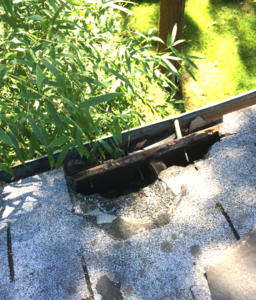Raccoon Feces - Raccoon latrines may be at the base of a tree, on a log, on a woodpile, on a deck, on a patio, on a roof, or in an attic of a Long Island residence. Raccoon feces is 2 to 3 inches long and resembles dog feces. What distinguishes it as raccoon feces, is the presence of berry seeds.




